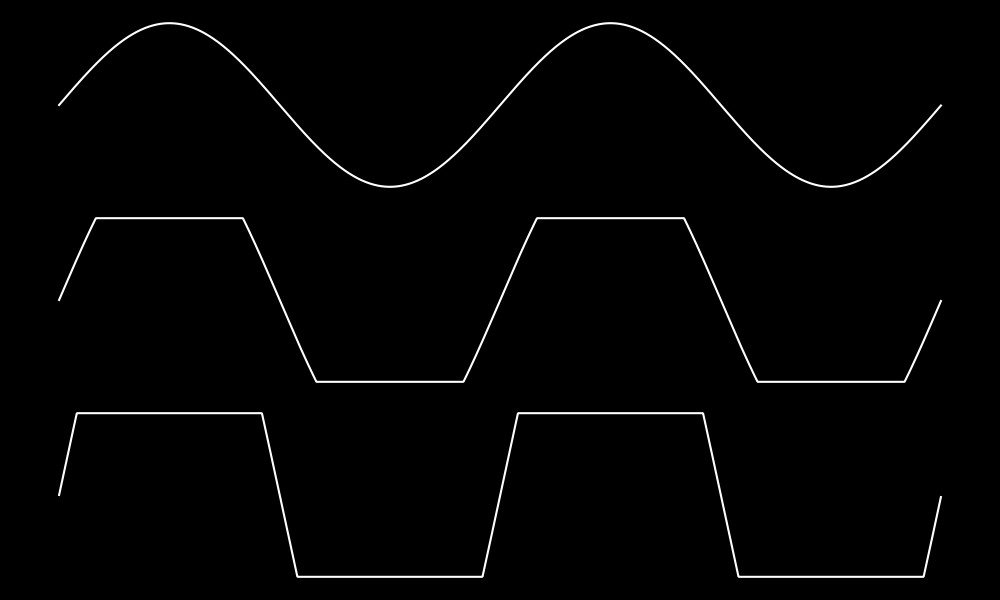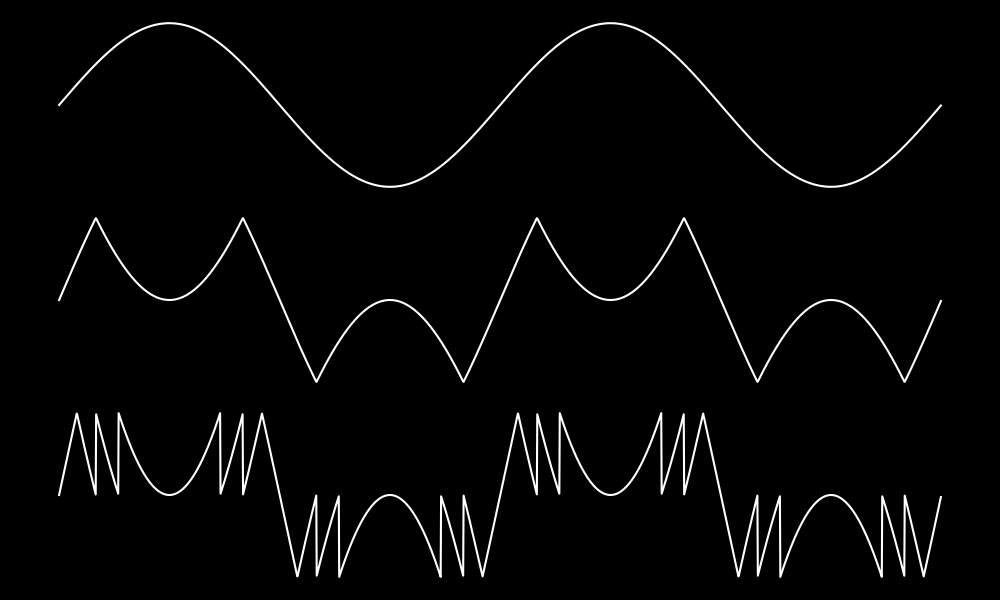Distortion

Woovebox clipping distortion example. Top: regular sine wave. Middle: sine wave at double amplitude and clipped. Bottom: sine wave at quadruple amplitude and clipped.
Two types of distortion are available; clip distortion and wave folding distortion.
Clipping can make sounds more aggressive or "gritty", which is useful in creating distorted guitar sounds or punchy basslines.
Fold-back distortion can produce unusual and unpredictable harmonics, which can be great for creating unique textures in electronic music or adding depth to synthetic sounds.

Woovebox fold-back distortion example. Top: regular sine wave. Middle: sine wave at double amplitude and folded. Bottom: sine wave at quadruple amplitude and folded.
These distortions modify the harmonic content of the original audio, often making it richer, more complex, and suitable for various artistic or aesthetic purposes in music production and sound design.
- Positive amounts for the 'dist' parameter on a track's 'GLob' page under 12/A4, specify a traditional clipping distortion; the signal is multiplied by 2^value ("two to the power of the value") and any signal above a threshold is truncated to that threshold. These values are indicated by a 'CL' prefix.
- Negative amounts for the 'dist' parameter on a track's 'GLob' page under 12/A4,specify a fold back distortion; the signal is multiplied by 2^value ("two to the power of the value") and any signal above a threshold is folded back in a specific way to below the threshold. These values are indicated by a 'Fo' prefix.